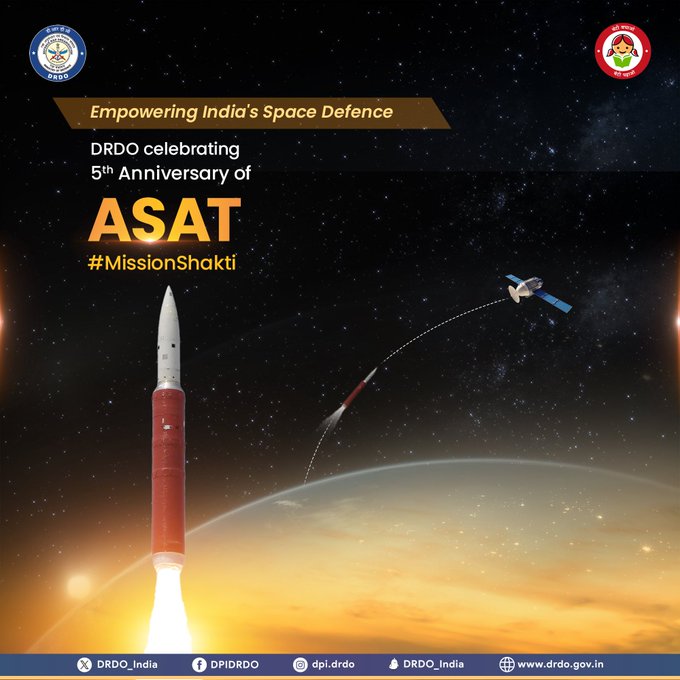SOURCE: IDRW.ORG TEAM

On this day five years ago, India successfully conducted Mission Shakti, an anti-satellite (ASAT) missile test, propelling the nation into an elite group of countries with this advanced technology.
The mission involved a specially designed missile launched from Dr. APJ Abdul Kalam Island, precisely targeting and destroying a small Indian satellite orbiting Earth at an altitude of 350 kilometers and traveling at a phenomenal speed of 24,000 kilometers per hour. This remarkable feat showcased India’s growing prowess in the field of aerospace and defense technology.
With Mission Shakti, India became only the fourth nation in the world, alongside the United States, Russia, and China, to possess this sophisticated ASAT capability. This accomplishment marked a significant milestone in India’s journey towards self-reliance in critical defense technologies.
The ability to neutralize enemy satellites offers a distinct strategic advantage in modern warfare. Satellites play a crucial role in military communication, navigation, and intelligence gathering. By demonstrating its ASAT capability, India has established a potential deterrent against nations that might consider using space-based assets for hostile purposes.
While Mission Shakti highlighted India’s technological prowess, it also sparked international concerns about the potential for increased space debris. In response, India has actively advocated for responsible development and utilization of space technologies to ensure the sustainability of the outer space environment.
NOTE : Article cannot be reproduced without written permission of idrw.org in any form even for YouTube Videos to avoid Copy right strikes. Websites doing illegal reproductions will get DCMA and Legal Notices.